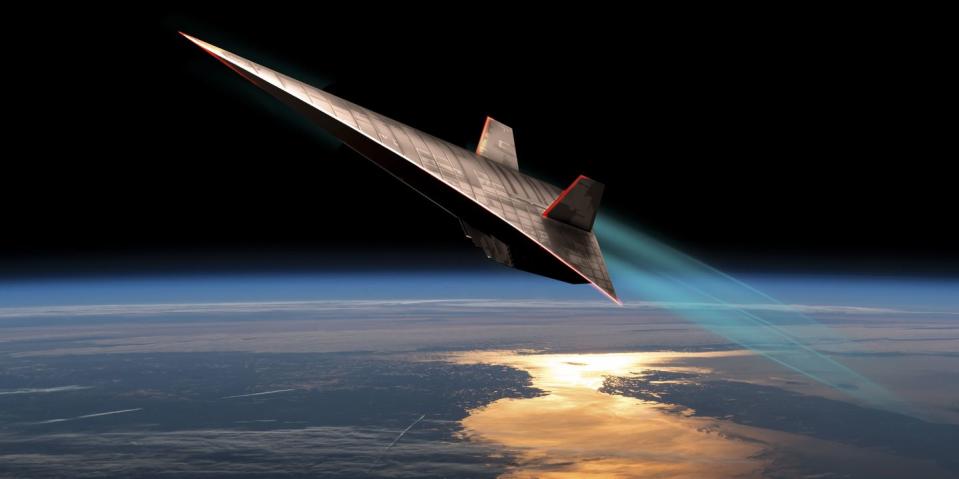If We Mix Jet Fuel Using Shockwaves, We Can Get to Mars Faster

New research suggests shockwaves could mix fuel for a hypersonic Mars rocket.
Hypersonic is Mach 5 or more, which would greatly shorten travel within our solar system.
Shockwaves rapidly mix fluid streams, which is a requirement for a supersonic-air ramjet.
Could astronauts surf to Mars assisted by a hypersonic shockwave? A new paper in the Journal of Fluid Dynamics suggests it’s a more likely scenario than we think, combining traditional propulsion with a shockwave method for mixing fuel ratios to reach their full explosive potential.
In the new paper, researchers from the University of Southern California investigate the way applying a shockwave helps or hinders how the “scalars,” or different fluids, can mix effectively. Take a leisurely swirl of oxygen and fuel and you might only reach regular supersonic speeds. But add the Nutribullet impact of a shockwave and the oxygen-fuel smoothie could carry you at five times or more the speed of sound, reaching the hypersonic range.
🛰 Space is a trip. Let's explore it together.
Pushing the airflow past the speed of sound helps enable a kind of transport called a scramjet—shortened from supersonic combustion ramjet, an air-fed rocket that burns continuously as long as it has fuel.
"Imagine instead of a rocket you have something lighter and smaller that could take us all the way to Mars,” participating researcher Ivan Bermejo-Moreno said in a statement. “The combination of scramjets and rotating detonation engines, both based on shock waves and turbulence, may one day do just that."
To test their ideas about mixing fuel within supersonic airflows using shockwaves, the researchers made a friction-free container and pushed fluids like air through it. (Air is a fluid, and fluid dynamics include everything from most liquids to flows of sand to certain groups of animals that move in groups.)
Imagine someone blowing a smoke ring: they use their mouth as an empty chamber and selectively push air through in a wave, informally speaking. What results is a swirling toroidal vortex that traps smoke inside. The air is pushed, pulled, and eventually dissipated.
📩 Make your inbox more awesome.
In the no-friction shockwave Nutribullet, a similar thing is happening, but the goal is to scatter the air and make it as turbulent as possible. Researchers believe using a shockwave might be the most effective way to do just that, more uniformly, quickly, and consistently than with any other reaction we can make in this context.
From the paper:
“Interaction with the shock increases alignment of the scalar gradient with the most extensive eigenvector, decreasing it with the most compressive, which is still dominant. The barycentric map of the passive scalar gradient also reveals that, across the shock, the most probable alignment between scalar gradient and strain eigendirections converges towards the alignment that provides the most dissipation. This also leads to an enhancement of scalar dissipation immediately downstream of the shock.”
This means the shockwave strikes the flow and both blasts it completely apart and drastically slows it down, which is critical in an engine where airflow passes through faster than the speed of sound. Capturing energy at its most effective point is vital, unless we want a scramjet that’s a mile long.
"In this way, we isolated the interaction between turbulent flows and shockwaves," Bermejo-Moreno said. Next, the researchers want to study factors like chamber shape as they continue to search for the best way to reach hypersonic speeds.
You Might Also Like

